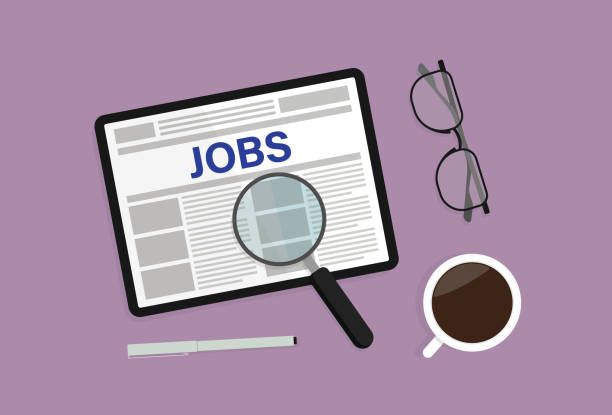5 Types of Job Description Bias & How To Avoid Them
Reading Time:
Reading Time:

JDs are vital to the success of your hiring practices. They paint a picture of your organization and showcase the perks of becoming a part of your team. Unfortunately, any type of job description bias can ruin an otherwise spotless JD.
Even minor biases in job ads, even if the company doesn’t mean it, can push away great candidates. These biases might be so small that people don’t even realize they’re there. But they can stop excellent people from applying.
Imagine this: because of these biases, almost 40% of people might not even try for the job. So, that’s why it’s crucial to be fair and inclusive in job ads!
And let’s not forget that The US Equal Employment Opportunity Commission states:
“It is illegal for an employer to publish a job advertisement that shows a preference for or discourages someone from applying for a job because of his or her race, color, religion, sex (including gender identity, sexual orientation, and pregnancy), national origin, age (40 or older), disability or genetic information.”
Knowing the signs of unfair job ads helps you find the right person for the job and keeps you out of legal problems. Also, when job ads are fair, it makes a big difference in a tough job market. A workplace that welcomes everyone might be the reason someone chooses to work there. So, being fair in job ads is a win-win for everyone.
In workplaces today, unfairness based on gender is still a problem. Studies show that men have a 30% better chance of getting important jobs compared to women. So, many women are afraid to speak up about unfair treatment because they worry it might hurt their careers. This unfairness often starts right at the beginning, when people are applying for jobs, and it’s clear in unfair job ads. So, we need to make sure everyone has a fair chance right from the start.
Some job ads use words that make certain people not want to apply. These words can show unfair ideas about gender. These biased words might be in the job title or the main part of the ad. So, we need to be fair and use words that welcome everyone to apply for the job. Widespread examples of gender biases in JDs include:
Sometimes, job ads treat people differently because of their age. This happens to both younger and older people. But job descriptions shouldn’t do that. Everyone deserves a fair chance, no matter how old they are. So, let’s be fair to everyone.
Unlike gender biases, the signs of age discrimination in a JD aren’t always immediately obvious. Some sensitive age-related terms include:
Without realizing it, sometimes people can treat others unfairly because of their health conditions. This is called ableism. But it’s not right, and it can cause problems for a company. Many people in the US have health conditions, so it’s important to be fair to everyone. Let’s make sure everyone has an equal chance.
Sometimes when writing JDs, we can unfairly assume things about a person’s abilities. And this is called ableism. But in many jobs, a person’s abilities might not be that important. So, let’s make sure job descriptions are fair and don’t assume things about what people can do. Everyone deserves an equal chance. The following text contains ableist language:
Job descriptions should only include what’s necessary for the job. But sometimes, they ask for things that aren’t really needed, which can leave out certain people. Fair job descriptions focus on what’s truly essential for the job, giving everyone an equal chance. So, let’s create job opportunities that are fair for everyone.
Also, some job descriptions forget to mention if their workplaces have facilities that are easy to use for people with disabilities. And this can make it hard for them to apply. But by making job descriptions clear and mentioning accessible facilities, more talented people, including those with disabilities, might apply. So, let’s create equal opportunities for everyone.
Some JDs may contain instances of racial and nationality slurs that offend and turn away candidates who are people of color (POC).
According to Pew Research, racial biases remain a common concern. 64% of Black adults describe bias and unfair treatment based on a job applicant’s race or ethnicity as a major problem. An estimated 49% of Asians and 41% of Hispanics feel the same while 30% of white adults share the sentiment.
Racial biases in JDs range from the obvious (e.g., blacklisting/whitelisting) to subtle terms like “oriental” and “native English speaker.” These biases exclude individuals from specific ethnic backgrounds and also extend to applicants of different nationalities. Common instances of racial and nationality biases in JD text include:
Sometimes, job ads focus too much on degrees from famous schools. But degrees aren’t the only way people learn. People can gain skills from online courses, training, or learning by doing things themselves. Experience is a great teacher too. In fact, most of what we learn about our jobs, we learn while working.
Sometimes, job ads have hidden educational biases that can affect who can apply. These biases can keep really good people from getting the job. So, it’s important to know about these biases so everyone gets a fair chance. Here are some things to look out for:
Job ads might change in the future to be even more fair. As people learn more and accept different backgrounds, job ads will become better too. It’s all about making sure everyone gets a fair chance! You can keep your descriptions polite, inviting, and effective with the times by practicing the following measures:
So, you can count on IceHrm to reach out the red flags in JDs (even the tricky ones) before they cause any damage to your hiring and recruitment campaigns. Schedule a demo to see for yourself!